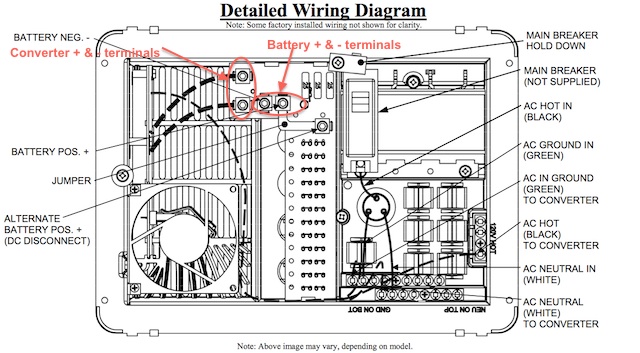LA48340
Feb 17, 2016Explorer
Progressive Dynamics charger PD4045
I am trying to wire up PD4045 "Mighty Mini" in a 10' utility trailer/workshop. I have the AC side figured out. On the 12 V side....there are 12 wires coming off the fuse bar. 2 red are for 30 amp...10 black are for 20 amp uses. I have the battery grounded to the chassis. There are 2 lugs on the 12v side for battery + and -. Does the charger get its ground from someplace other than the batt -? With this connection eliminated I still get output on all the 12V feed wires. Without both battery + and - wires connected don't see how the battery is supposed to charge. I wrote to PD..they told me there are no neg connections needed and told me to consult an RV specialist. thanks for any insight.
